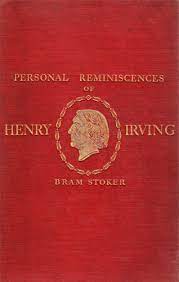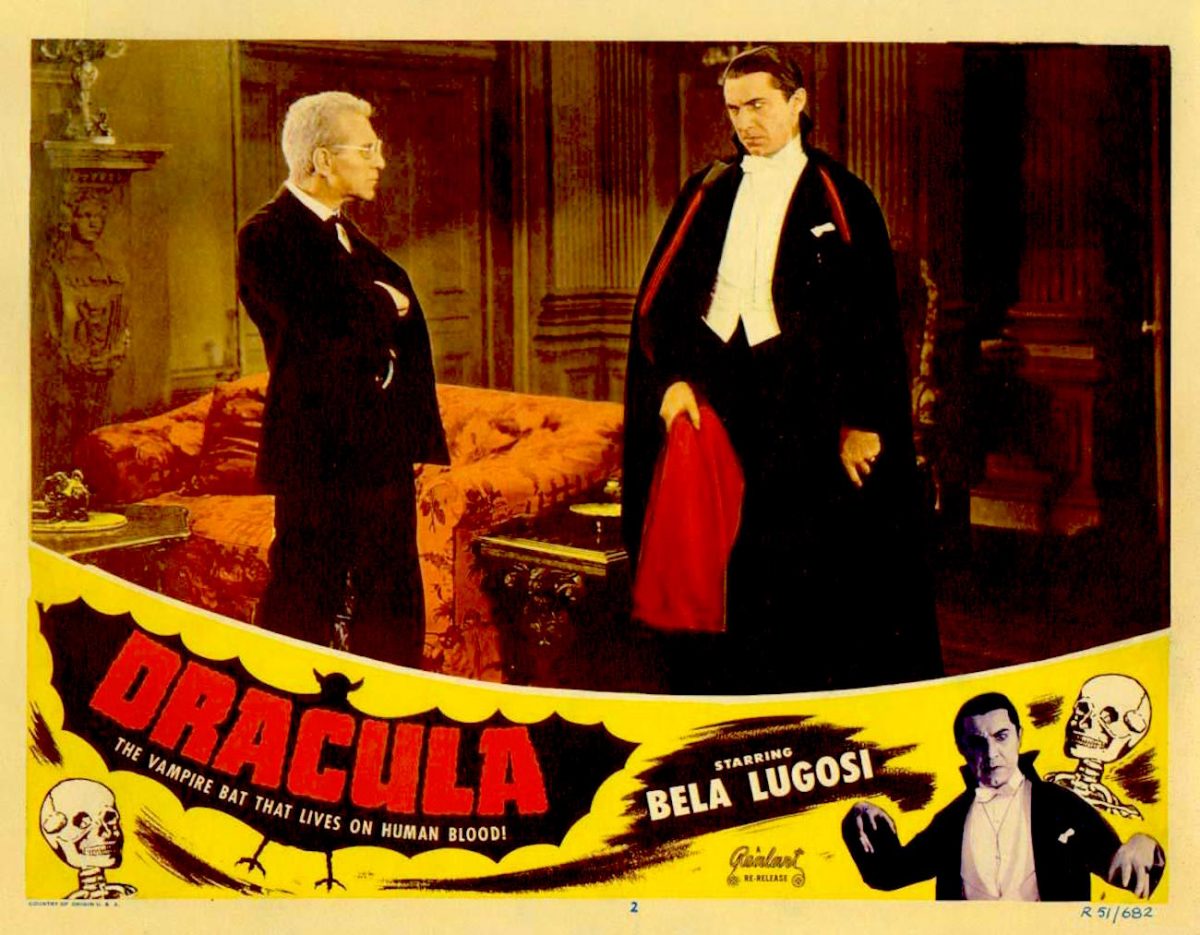125 Years of Dracula

Stanley J. Stepanic is an Assistant Professor in the Department of Slavic Languages and Literatures in University of Virginia’s College and Graduate School of Arts & Sciences. In this Thoughts From the Lawn, as we approach the popular holiday of Halloween, Stepanic shares historical details about Bram Stoker's character and novel Dracula as we celebrate its 125th year of publication.
May 26th, 1897, marked the first time Bram Stoker’s novel Dracula was published. Released in a plain, yellow cover with red lettering by Archibald Constable and Company in London, England, it was the author’s fifth book, though during his life it was not his most popular publication, nor, based on data, his most commercially successful. According to the British Library, this first edition cost 6 shillings, which is approximately $27 in 2022. Based on surviving evidence, Stoker was contracted to receive no royalties for Dracula until half of the produced stock was sold. The total number of copies of the first edition was 3000, which left 1500 copies from which the author could derive a profit. However, from this number, roughly as many as 500 copies were sent to family, friends, and critics to spread the word about the novel. Based on simple math, these numbers would yield Stoker a profit of perhaps only $2700 in 2022, assuming a royalty percentage of 10%, which would have been quite unlikely. Even had he earned 100% on the first edition, the gross profit of $27,000 in 2022 money would scarcely be enough upon which most people could survive. The fact is writing was not Stoker’s primary profession. Writing was for him, to use modern parlance, a “side hustle” at most.

So how did a moderately successful novel become such a significant work of literature and why is Dracula still relevant 125 years later? Recently, for example, a surge of interest rose via a relatively unknown website from 2012 called “Dracula Daily,” a Substack (essentially an online newsletter system) that presented the novel in chronological fashion. Fans signing up via email were treated to each chapter as it appeared in the text, without changes, in terms of the dating provided. Though technically the novel is told in a different order, this idea led to a rise of interest in the novel on Tumblr by 2022, currently followed by over 226,000 unique users. Surely, there is some reason for this over a century later.
The simple explanation is that Dracula, as a character, has grown to represent the changing times for every generation since the novel’s original inception. Stoker never experienced wide fame from his most famous work. In his own time he was most remembered for working as the theater manager at the Lyceum in London for his employer Henry Irving, then at the top of his game in the acting profession. When Stoker died in 1912, a week after the sinking of the Titanic, one obituary mentioned Dracula briefly but focused on his Personal Reminisces of Henry Irving (1906) as his most important contribution to the history of literature. Stoker was truly living in the shadow of the world of the arts, at the time, until the lawsuit surrounding the copyright of Dracula and the release of the film Nosferatu (1922) led to more focus falling upon the original novel.

It was from that point that Count Dracula, as a character, slowly became a phenomenon. Starting with a theater adaptation by Hamilton Deane in 1924, later the famous Broadway production with Bela Lugosi in 1927, then the Universal Studios film in 1931, the character started on a path of worldwide recognition. Those who are familiar with the novel, however, frequently note that these various adaptations, even the generally accurate 1992 Bram Stoker’s Dracula, are not much like the novel itself. Nosferatu introduced the idea of the vampire dying in sunlight, something that never occurred in Stoker’s novel. The early play versions took place in the late 1910s or early 1920s, not the 1890s as per the original plot. In the 1931 film where Bela Lugosi reprised his role as the Count from the Broadway production, Renfield replaces Jonathan Harker as the solicitor assisting Dracula with his real estate purchases, automobiles abound on the streets of London, and the ending takes place in the bowels of Carfax Abbey, a location that does not even exist in Stoker’s original work. When Christopher Lee revitalized the character in 1958 with Dracula, known as Horror of Dracula in some other markets including the United States, Jonathan Harker was suddenly a librarian who already knew Dracula was a vampire, his fiancé Mina was married to Arthur Holmwood, whose fiancé in the novel, Lucy, was instead his sister and engaged to Jonathan. Dracula, further, did not live in Transylvania, but rather in Klausenberg, which is today known as Cluj-Napoca in Romania. In the 1992 film Bram Stoker’s Dracula, as a further alteration, Mina was instead Dracula’s reincarnated wife from the 15th century and his sole impetus for leaving his domain to travel to England. Based on these few examples, truly Count Dracula has often appeared as something other than the character Stoker envisioned.

Yet today he is still discussed. At this point, there is no definitive number tracking the number of times Dracula has appeared in popular culture, though it is perhaps in the thousands or more by now. The popularity of the novel, interestingly, is tied to the character’s transformation over the past century from a relatively minor horror novel villain to the lord of all that is evil. From the 1920s, it has been primarily adaptations of the novel that have made it famous, with the character Count Dracula becoming a thing all its own. Each decade since the 1920s has seen at least one popular version of the character, adapting constantly to changing cultural climates and even other cultures, as witnessed in unusual and under-studied examples such as Dracula in Istanbul (Drakula İstanbul'da, 1953) from Turkey, based on a “bootleg” Turkish version of Stoker’s novel, or Dracula Sovereign of the Damned (闇の帝王ドラキュラ - エピローグ, 1980) from Japan, based on the American comic book series “The Tomb of Dracula.” Most recently a short series on Netflix reenvisioned the character for modern audiences, and we are unlikely to be without the Count in the foreseeable future. The reason for the lasting popularity of the novel is, simply: Dracula himself represents a side of humanity that remains unchanging, and which is constantly adapting to the times.
- A Revolution in the Air: The Wright Brothers Take to the Sky on December 17, 1903
- Musings on National Violin Day
- Making the Promise Real: How a UN Tax Convention Can Fulfill the UNDHR’s Vision
- UVA Club of Atlanta: Virtual Pilates Class
- UVA Club of New Orleans: Hoo-liday Party
- Virginia Club of New York: Big Band Holidays Jazz Outing